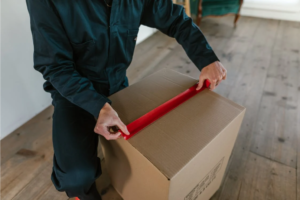Long Distance Move: Moving to a new location, especially a long distance away, can be exciting and challenging. The prospect of new experiences, opportunities, and a fresh start awaits, but planning and executing a long-distance move requires careful preparation. From organizing your belongings to managing logistics, there are several key steps to ensure a smooth transition. This guide delves into essential strategies and tips to help you prepare for a long distance move.

Start Early: Planning for Success
Assess Your Situation
Before embarking on your long-distance move:
- Take time to assess your current situation.
- Consider factors such as your budget, timeline, and household size.
- Review your factors for moving and exactly how they align with your future objectives. This analysis will certainly supply you with a clear understanding of the scope of your relocation.
Create a Moving Timeline
Once you’ve evaluated your situation, create a moving timeline that outlines key milestones leading up to the moving day. Start as early as two to three months before your move, especially if it involves a cross-country relocation. This timeline will help you allocate tasks effectively and avoid last-minute stress.
2. Declutter and Organize
Sort and Declutter
A long-distance move presents an excellent opportunity to declutter your belongings. Sort your items and decide what to keep, donate, sell, or discard. This reduces the amount you have to move and ensures a fresh start in your new home.
Inventory Your Belongings
Create an inventory of all your belongings, categorizing them for easier organization and tracking. This inventory will be essential for insurance purposes and help you track your items during transit.
Find a Reliable Moving Company
Research Moving Companies
Take time to research and gather quotes from reputable moving companies that specialize in long-distance moves. Read reviews, ask for recommendations, and ensure the chosen company is licensed and insured.
Get an In-Home Estimate
Invite representatives from the moving companies you’re considering for an in-home estimate. This will give you a more accurate idea of the costs and allow you to discuss specific requirements.
Plan Logistics
Create a Packing Strategy
Develop a packing strategy that includes a plan for each room. Start packing non-essential items early and save essential items for last. Label your boxes clearly to make unpacking easier.
Gather Packing Supplies
Collect all necessary packing supplies, including boxes, tape, bubble wrap, and packing paper. Having these materials on hand will make the packing process more efficient.
Consider Special Items
Invest in proper packaging for fragile or valuable items to ensure their safe transportation. This may include custom crating for artwork or antiques.
Notify Relevant Parties
Change of Address
Notify important parties of your change of address, including the post office, banks, utility companies, and any subscriptions. This will help prevent important mail from getting lost during the transition.
Transfer Medical Records
If changing healthcare providers, ensure your medical records are transferred to your new provider. This will help you receive seamless medical care in your new location.
Plan for Living Arrangements
Temporary Accommodations
If you cannot move directly into your new home, make arrangements for temporary accommodations. This could be a hotel, Airbnb, or staying with friends or family.
Set Up Utilities
Ensure your new home has essential utilities such as water, electricity, and internet set up before you arrive. This will make your move-in process much smoother.
Pack Thoughtfully for Arrival
Essentials Box
Pack an essentials box with items you’ll need immediately upon arrival, such as toiletries, a change of clothes, important documents, and basic kitchen supplies.
Unpacking Plan
Have an unpacking plan in mind, starting with the most essential rooms. This will help you settle in gradually without feeling overwhelmed.
Stay Organized During Transit
Keep Important Documents Handy
Keep important documents, such as your inventory list, moving contracts, and identification, easily accessible during transit.
Communication with Movers
Maintain open communication with your chosen moving company throughout the process. Stay informed about the progress and expected arrival date of your belongings.
Conclusion
Preparing for a long distance moving requires meticulous planning, organization, and a proactive approach. By starting early, decluttering, finding a reliable moving company, and planning logistics, you can significantly reduce the stress of a major relocation. Additionally, notifying relevant parties, planning for living arrangements, and packing thoughtfully for your arrival will contribute to a smoother transition into your new home. Remember, a well-prepared move sets the stage for an exciting new chapter in your life.



